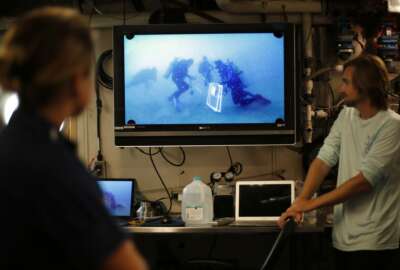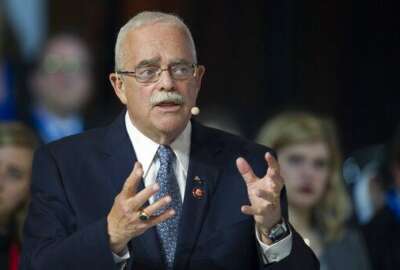How to change an agency’s culture
Two agencies had widely differing culture problems, and senior civil servants fixed them with the basics
Culture has no precise definition, yet people are always trying to change it. For federal agencies and businesses alike, the new mode of partial telework has produced a culture change. That is, if culture is in part an organization’s shared set of expectations.
A pandemic forced the change in how people perceive where they should work. The advent of new technology made telework at its height even possible.
More often, human-caused conditions require human-driven cultural change.
In NASA’s case, culture change followed a spectacular tragedy, the crash of the Space Shuttle Columbia in 2003. The exhaustively-studied cause was foam insulation from an external fuel tank breaking off and hitting the heat insulation tiles on the wing of the orbiter. That left sheet metal exposed to the heat of reentry, heat the thin skin of the orbiter could not possibly withstand. Thus the crew was doomed upon eventual re-entry from just a few moments after the shuttle left the ground.
Foam strikes had been a regular occurrence over the life of the Shuttle program, but NASA leadership agreed it was an accepted flight risk, not a safety issue. But plenty of internal political maneuvering took place in NASA between the launch and the disaster, with various groups aware of the threat, but having differing views of whether catastrophe was imminent. Thus the “accepted flight risk” policy lasted until 8:59 EST on February 1, 2003.
Ultimately, NASA established a unit called the Engineering and Safety Center. The investigation board found the lack of independent oversight led program managers to dismiss the threat from foam strikes. It found the Safety and Mission Assurance Organization was ineffective. That was relayed in my interview with Ralph Roe Jr., who recently retired as NASA’s chief engineer. He led the Engineering and Safety Center, which to this day “provides a group of experts that can come in and look at a problem like that and say, ‘Hey, no, you need to do this or that differently.'”
I asked Roe, who is a Service to America Medals finalist, whether his main challenge was less engineering and more human relations and getting program people to accept a new approach.
He answered, “Oh, absolutely.” Now, he said, “I’m proud to say after nearly 20 years, the NASA Engineering and Safety Center has really become ingrained in the NASA safety culture.” He said that, at first, he faced difficulties getting people to use the independent center. It took the administrator of NASA to force the issue. Now, Roe said, “program managers look for us to come help. And that’s really a huge achievement, in seeing that evidence that the culture actually changed.”
A culture cliché has it that culture change required top management commitment and persistence. But that’s what happened at NASA.
Sometimes, culture change requires removing the source of bad culture. Such was the case at the National Oceanic and Atmospheric Administration, specifically in its Commissioned Corps of people who operate NOAA’s research ships and airplanes. It fell to Rear Admiral Nancy Hann to fix “reports from across our workforce of bullying, harassment behavior,” even hazing when someone new arrived on a vessel.
It’s not a big workforce by federal standards, at about 1,000 people including 330 officers and 400 mariners. Some 600 are sailing or flying at a given time, Sammies finalist Hann said, and it was aboard the ships and aircraft that bad behavior occurred. The situation presented not just legal challenges, but problems for morale and mission performance.
Hann said the resulting training used its own cases as examples of what she would no longer tolerate.
Training skipped canned PowerPoint presentations. “We actually did case studies based on cases that occurred within our work environment, within our workforce. We did training in-person. We had really uncomfortable conversations with people.” Some were let go or suspended. Managers were told they had no option but to follow up on harassment or bullying reports. Hann said the Commissioned Corps even hired a contractor, a former FBI agent, to have on call to investigate reports.
“So there’s something occurring on a ship. You pull into the dock and he’s waiting there for you. He is going to find out what’s going on on that ship or that workplace,” Hann said.
Initially reports rose, Hann said, because people understood they would not face retaliation or indifference. Now reports have fallen off, and the ones that come in are less severe.
Hann checks with employees at all levels to make sure everyone participates in on-board exercises, and to get a sense of the temperature. She also tracks safety trends, on the theory that a hostile work environment impedes communication.
“We’re flying airplanes into hurricanes,” she said. “We’re operating ships in the Bering Sea with 40 foot waves. Not having good communication among your crew is the most threatening thing to safety. And we’re already doing dangerous work. We can’t have [harassment] be present.”
New examples of old truths. Career people can change agencies. They need appointees’ support, and it takes a clear-eyed strategy.
Nearly Useless Factoid
Due to a substance called ethyl formate, the milky way is said to smell and taste of raspberries and rum.
Source: Smithsonian Magazine
Copyright © 2025 Federal News Network. All rights reserved. This website is not intended for users located within the European Economic Area.
Tom Temin is host of the Federal Drive and has been providing insight on federal technology and management issues for more than 30 years.
Follow @tteminWFED






